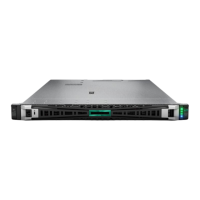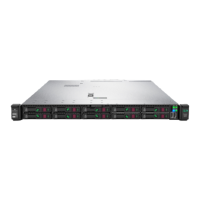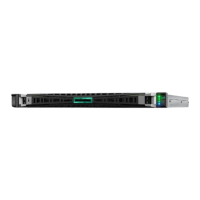Procedure
1. From the System Utilities screen, select System Configuration > BIOS/Platform Configuration
(RBSU) > PCIe Device Configuration.
2. Select a device from the list.
3. Select settings. Depending on the device, options include:
• Device Disable
◦ Auto—The device is automatically enabled at server boot.
◦ Disabled—The device is not automatically enabled.
• PCIe Link Speed
◦ Auto—Sets the link speed to the maximum supported speed of the PCIe link.
◦ PCIe Generation 1.0—Sets the link speed to a maximum speed of PCIe Generation 1.0.
◦ PCIe Generation 2.0—Sets the link speed to a maximum speed of PCIe Generation 2.0.
• PCIe Power Management (ASPM)
◦ Auto
◦ Disabled
◦ L1 Enabled—The device's link enters a lower power standby state at the expense of a longer
exit latency.
• PCIe Option ROM
◦ Enabled—The platform optimally loads PCIe Option ROMs to save boot time.
◦ Disabled—The platform disables all PCIe Option ROM optimizations, which might be required
for older PCIe devices.
4. Save your settings.
Advanced platform configuration options
Selecting a ROM image
On a server with redundant ROMs, use the ROM Selection option to revert the server to a previous BIOS
ROM image.
Procedure
1. From the System Utilities screen, select System Configuration > BIOS/Platform Configuration
(RBSU) > Advanced Options > ROM Selection.
2. Select a setting.
Advanced platform configuration options 121

